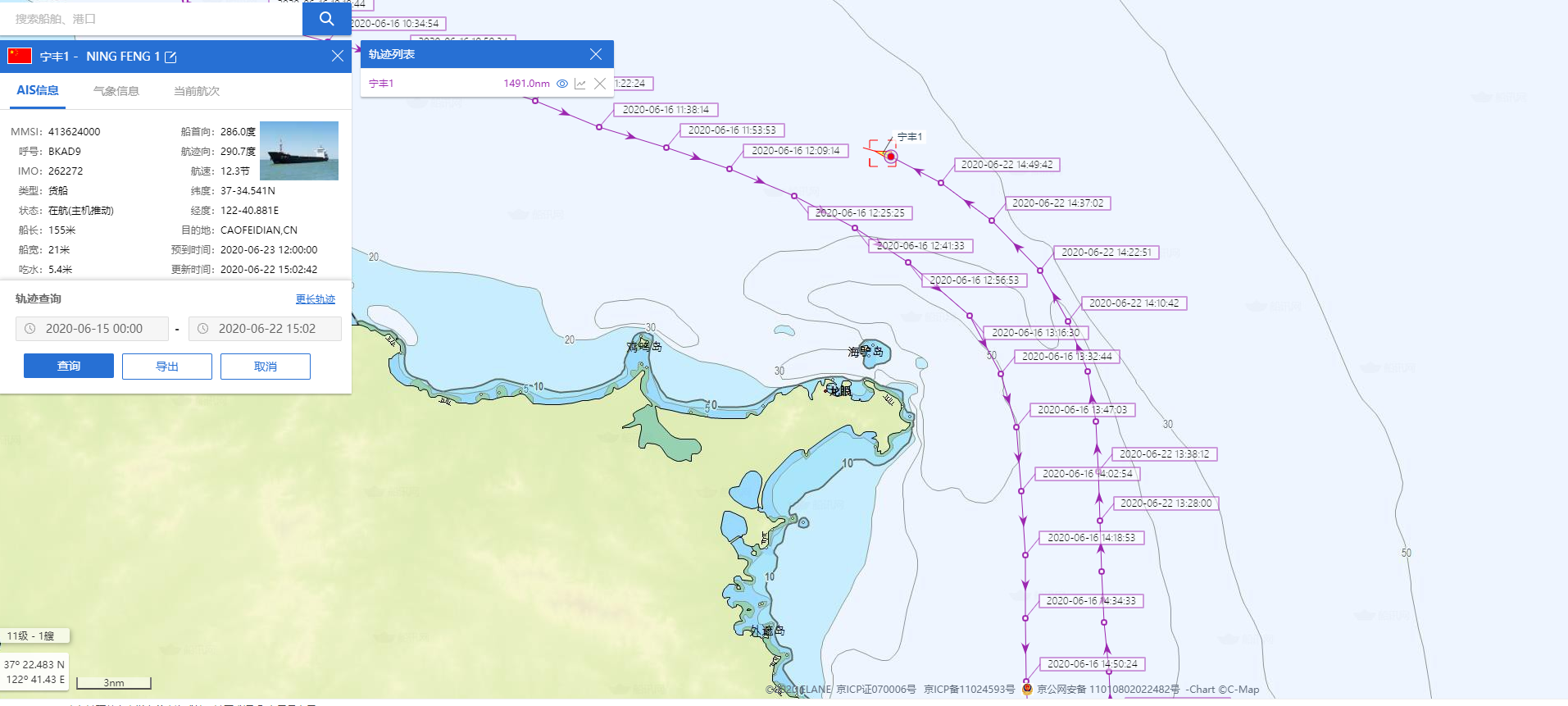上一节我们讲述了在地图上加载图标,以及监听鼠标点击事件,这一节我么来讲述如何在海图上描绘船舶历史航迹图,航迹图的描绘实际上是航迹点的描绘和点之间的线段的描绘,其实也是在海图上添加ol.vector.layer图层 图层是通过featrue json 方式加载的,下面我们具体来研究一下
/**
* 根据数组内容获得Feature
* @param tailpoint json 包含航迹数据的航迹点
* @param coordinate 航迹点的经纬度坐标
* @returns 点featrue
*
*/
function getFeaturepoint(trailpoint,coordinate) {
if (!isNaN(coordinaete[0]) && !isNaN(coordinaete[1])) {
shiptrailfeature = new ol.Feature({
geometry : new ol.geom.Point(coordinate),
'type' : 'portship',
"course" : trailpoint[3],
'time' : trailpoint[0],
'speed' : trailpoint[4]
});
return shiptrailfeature;
} else {
return null;
}
}
/**
* 获取航迹点的之间的线段featrue
* @param coordinaete1 端点坐标1
* @param coordinaete2 端点坐标2
* @returns 线段 featrue
*/
function getFeatureline(coordinaete1,coordinaete2) {
if (!isNaN(coordinaete1[0]) && !isNaN(coordinaete1[1])) {
shiptrailfeature = new ol.Feature({
geometry : new ol.geom.LineString ([coordinaete2,coordinaete1])
});
return shiptrailfeature;
} else {
return null;
}
}
//轨迹的显示
function historyzoom() {
geojsonObject = gethistorygeojson()
var vectorSource = new ol.source.Vector({
features : geojsonObject
});
map.removeLayer(traillayer);
traillayer = new ol.layer.Vector({
source : vectorSource,
style : styleFunction2
});
map.addLayer(traillayer);
}
//获取轨迹点的 featrue json
function gethistorygeojson() {
var featrues = [];
var coordinaeteold; //端点1
var coordinaetenew; // 端点2
var latold;
var lonold;
// 实际使用时tail是从后天传输的数据,这是一个数据示例
trial=[['2020-6-1 11:58',119,39,311,10],['2020-6-1 12:02',119.01,39.01,311,10],['2020-6-1 12:05',119.02,39.02,311,10]]
for (var i = 0; i < trail.length; i++) {
if (i == 0) {
lonold = parseFloat(trail[i][1]);
latold = parseFloat(trail[i][2]);
coordinaeteold = ol.proj.transform([ lonold, latold ],'EPSG:4326', 'EPSG:3857');
featurepoint = getFeaturepoint(trail[i],coordinaeteold);
if (featurepoint != null) {
featrues.push(featurepoint);
}
} else {
var lonnew = parseFloat(trail[i][1]);
var latnew = parseFloat(trail[i][2]);
coordinaetenew = ol.proj.transform([ lonnew, latnew ],
'EPSG:4326', 'EPSG:3857');
if (!isNaN(coordinaetenew[0]) && !isNaN(coordinaetenew[1])) {
featurepoint = getFeaturepoint(trail[i],coordinaetenew);
if (featurepoint != null) {
featrues.push(featurepoint);
}
featureline = getFeatureline(coordinaetenew,coordinaeteold);
if (featureline != null) {
featrues.push(featureline );
}
coordinaeteold = coordinaetenew;
latold = latnew;
lonold = lonnew;
}
}
}
return featrues
}
实际效果如下图
